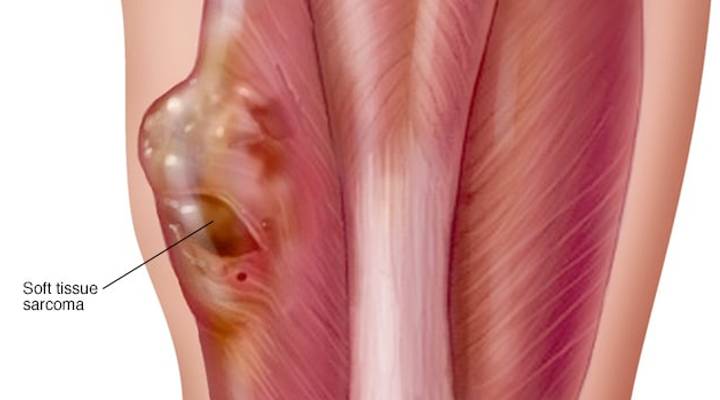Exercise and Diet Tips for Women with PCOS

Briefly, polycystic Ovary Syndrome (PCOS) is an endocrine condition that results in a spectrum of possible physical or mental manifestations that affect women, usually appearing with the onset of puberty. From a hormonal point of view, PCOS often indicates that there is an accelerated amount of insulin being produced – indicating that the blood carries plenty of glucose. Known as insulin resistance, this means that every cell receives more sugar.
This, in turn, can be identified as the cause of PCOS-linked weight gain. It’s a vicious cycle, really; this weight gain is associated with glucose uptake, further increasing insulin resistance. Exercise, by way of cutting down on fat and reducing glucose intolerance through weight control, helps regulate insulin resistance. This has cascading consequences, as other hormones such as estrogen and progesterone in the body are also modulated as a result.
Besides weight control, exercise further assists with other PCOS symptoms through its effects on human metabolism, like mood swings, irritability, and abnormally heightened appetite. In case of the latter, it works by balancing the production of the leptin and ghrelin hormones, which are responsible for appetite regulation but are found to be dysfunctional in those who live with PCOS. Further, working out is studied to be linked to pain management; with PCOS causing aches and pains in the body, as well as exacerbating diabetic issues, exercise is key in helping one deal with these effects.
Exercise & PCOS

Exercise is often prescribed all across the board as part of a healthy, balanced lifestyle. For those with PCOS, specifically, it could be crucial – even a small effort like a 10-minute walk every day, done consistently throughout the week, can bring about noticeable change.
Exercise impacts our system positively through the release of good hormones like endorphins that minimize discomfort and help relieve pain. Moreover, while exercising, one would be exerting stress upon their muscle cells, leading to some fatigue. This tiredness is beneficial for better sleep, which is often the best treatment and therapy for any disorder by giving your cells time to recover.
With regards to weight gain associated with insulin resistance, a lot of women see android obesity, which is fat accumulation around their belly area. Regular exercise and physical training help tone the body, especially if they target the core muscles. Not only would you feel more confident, but also observe that the risks that accompany PCOS have been significantly mitigated. One of the risks is the production of androgens – hormones that allow for the development of typically male characteristics, like testosterone.
Women who have PCOS see spiked amounts of androgens, as the disorder is connected to high levels of a hormone called LH (Luteinizing Hormone), which works in reproductive and menstrual functions. When LH levels are high, it stimulates the production of androgens. Good exercise, done right, adjusts these hormonal imbalances by regulating their production or the way your cells process them.
It is best to adopt a balanced workout that targets specific functions and takes a multi-pronged approach to PCOS alleviation. The first of these is endurance training, which could be done via aerobic exercises like walking, swimming, cycling, or any sport activity that one enjoys, like badminton, table tennis, or long tennis.
This indicates that the body would be going through an endurance movement, increasing its tolerance to exercise and capacity for more fluid movement over a period of time, relieving much of the fatigue and muscle inefficiency that often accompanies PCOS.
This is also a calorie burning process that occurs on the spot of the movement, making it the most intensive portion of your workout approach. We would then aim for strength training and resistance exercise, in which one’s body continues to burn fat even after the workout is over.
As the body tends to the wear and tear the muscles have experienced during the training exercises, it uses more energy and burns fat over the following 12-14 hour period. This is where strength training acts as a slow, fat burning process throughout the day. Besides these, we need to look to our own disciplines of wellness – yoga and pranayama.
Yoga & PCOS
Yoga postures, or asanas, and pranayama exercises help open up the uterus and restore good ovulation. Yoga is a revivifying and comprehensive practice, helping you meditate and calm down the mind. It also checks the dysregulation of the thyroid, which can malfunction in those with PCOS. Moreover, with certain yoga exercises, the core muscles are incorporated into the asana, helping strengthen and tone them.
A workout that involves components from all three strands of training is optimal to deal with PCOS; a good cardio element thrice a week, aligned with strength training thrice a week and the practice of yoga and pranayama twice a week, is thus an ideal combination.
Diet & PCOS

Dietary intake is an influential part of PCOS treatment, as it is directly linked to insulin resistance and weight management. Your diet needs to build a strong nutritional profile that balances how your body processes food. A person living with PCOS should partake in a fiber-rich diet that includes complex carbohydrates.
Vegetables like broccoli, spinach, fenugreek leaves, different peppers, bottle gourd, zucchinis, and other edibles like mushrooms are all high in fiber and help slow down the passage of food in the digestive system, thus preventing a rapid boost of insulin while eating, and helping against insulin resistance. Proteins are similarly beneficial, helping in governing hormone imbalance. In the right amounts, proteins contribute to hormone synthesis and increasing the body’s metabolic rate.
As they are digested slowly and help generate appetite-satiating hormones, they allow you to feel full for a longer period of time. A diet rich in protein will also ensure that the wear and tear that the body undergoes during exercise is being repaired and the muscles have enough fuel to be recharged.
While this ratio of proteins, fats, and carbohydrates is to be a measured and strategic component of your diet, it is also important to note where they come from. Good, complex carbohydrates need to be wholesome, natural, and consumed from food cooked at home. Protein intake needs to be similarly checked – try to strike a balance between plant-based and animal-based sources of protein.
Additionally, don’t shy away from fats! Good fats in the form of nuts and seeds are desirable. It is advised to limit your consumption of saturated fats like coconut oil or ghee, but not do away with these entirely, as they are beneficial in moderation. With this being said, try to avoid junk or processed foods – edibles that are mass produced and loaded with unhealthy amounts of sugar or preservatives to make them more appealing to consumers.
When it comes to your eating habits, pay attention to your portion size and frequency of meals. Instead of having three large meals in a day, adopt a schedule that allows you to have smaller and more frequent meals to prevent an insulin spike. Spread this into five or six small meals a day, all of which target the nutritional profile that matches your needs.
PCOS is often complicated and different for every woman, which is why it is important to make the shift to a lifestyle that eases its symptoms and treats them from the inside. That being considered, it is also worthwhile to establish a strong support system to jointly help with your psychological health. Practices like monitoring your exercise and diet progress, carving out milestones for yourself, and being part of a like-minded network can help you be more structured, supported, and fair to yourself in this process.







